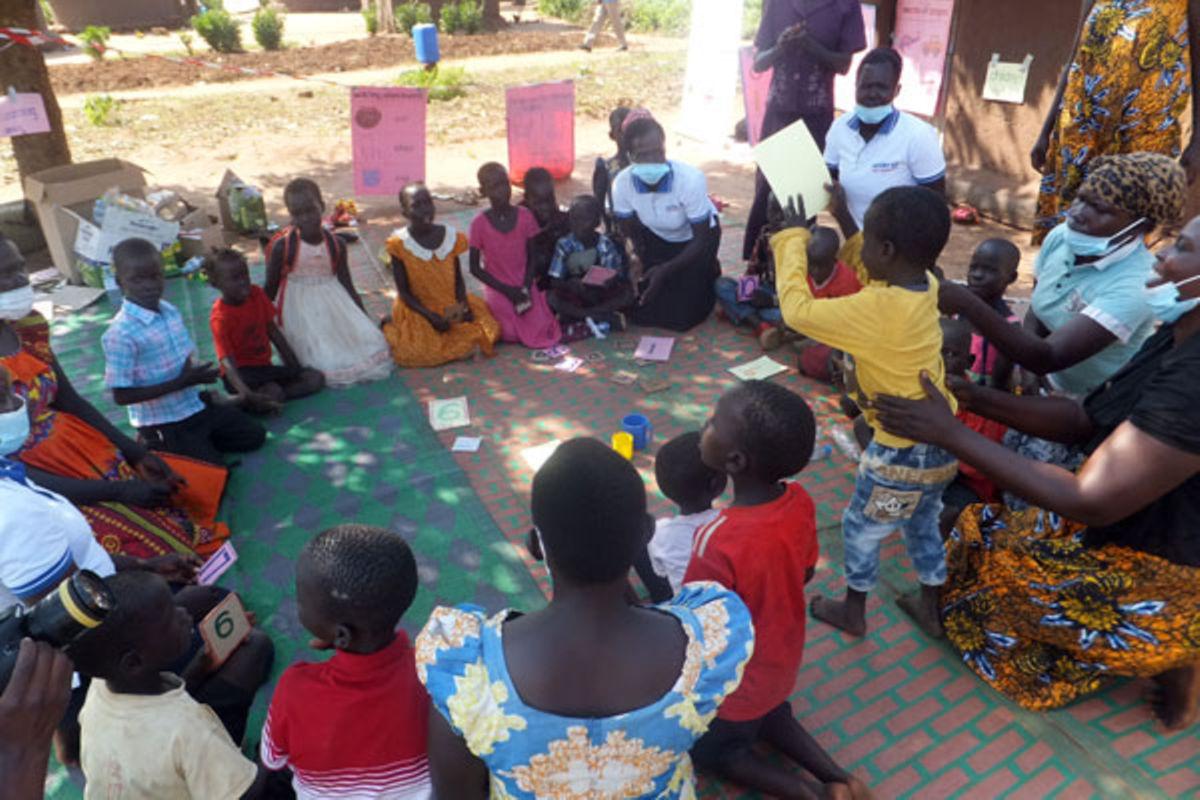Africa-Press – Uganda. Adjumani District authorities have unveiled a three-year education response plan to address the lack of education infrastructure and associated services among the refugee population in the district.
The document, a copy of which Daily Monitor has seen, aims at improving the learning for the increasing number of refugees and host community children.
Estimated to cost $37.942 million (approximately Shs136.5 billion) to execute, the plan which runs between November 2021 to mid 2024, is set to impact the lives of more than 124,300 refugees and host community learners every year.
The funding will increase the provision of education infrastructure, support the provision of scholastic materials, develop skills and livelihood opportunities for out-of-school youth.
It will also be used to expand access to education for children with disabilities, increase teacher supply and quality, enhance support to school inspection and supervision, among others.
The plan takes into account refugees and host communities’ population from three to 24 years old registered under the Office of the Prime Minister, and mainly from South Sudan.
Mr Philip Akuku Kayakya, the Adjumani senior education officer, said the district developed the plan following the increase in the refugee population that has nearly tripled.
“The increased number of refugee learners has affected the pupil-teacher ratio and the pupil classroom ratio, among others. Within the three years of the project, we want to ensure that refugee children and adolescents, as well as children within the host communities, have access to good quality education,” Mr Akuku said.
“We want to see improvement in learning outcomes among the refugee children at all levels irrespective of the country of origin as well as those in the host communities,” he added.
“The implementation of this plan will support Uganda to meet its long-term commitment to the SDGs to ensure all school-age children have access to quality education programme by 2030,” Mr Ben Anyama, the district chairperson, said. He added: “The number of targeted beneficiaries is based on the target enrolment which has been set for each year, which also incorporates the projected refugee influx in the coming years and the population growth in the host communities.”
Mr Ejoyi William, the projects officer at Plan International, said a consortium had been formed in consultation with the Ministry of Education to train at least 320,000 learners through home-based learning.
“The consortium is targeting 320,000 learners and 68,000 parents and guardians including caregivers who will be trained to also do home-based learning while children are at home. Under the home-based learning, playing and study materials that enhances learning and keep children busy will be provided,” Mr Ejoyi said.
He said the intervention was being implemented in the refugee settlements of Nyumanzi, Pagirinya, Baratuku Elema, Ayilo 1, Ayilo 2, Boroli, Maaji 2 and Maaji 3 and Agojo.
Meanwhile, the State Minister for Primary Education, Dr Joyce Moriku Kaducu, hailed the district leaders for the plan. “Government is committed through the Education Act to provide equal opportunities for learning to refugees and host communities by recruiting more teachers and building more classrooms to allow effective learning,” Dr Kaducu said.
Statistics
Since 2016, refugee settlements in Adjumani District continue to register a steady influx of refugees from South Sudan. Currently, the district is hosting more than 215,000 refugees across 19 settlements spread in the seven sub-counties of the district.
A total of more than 73 percent of the total refugee population are estimated to be children below 18 years.
However, only 36,039 of these children are enrolled in the 33 primary schools in the refugee settlements and additional 2,223 refugee children are enrolled in schools outside refugee settlements.
A total of 104,673 children of school-going age are in the host communities.
According to UNHCR data (2019), the gross enrolment rate (GER) among refugee children in Adjumani stands at 29 percent (pre-primary), 67.2 percent (primary), and only 6.6 percent (secondary). As of September 2019, the GER for preprimary is 54.5percent among the refugees and 17.2 percent among the host communities in seven sub-counties in Adjumani and refugees in Adjumani refugee settlements.
While there is a relatively high enrolment of girls in preprimary and primary levels, gross enrolment for refugee girls at the secondary level is only 3.3 percent.
Uganda’s Refugee Act of 2006 provides that refugees should have the same access to elementary education as Ugandan nationals and the same access to further studies as other foreigners living in Uganda.
Despite this, in 2018, it was estimated that 57 percent of refugee children in Uganda (at least 353,000) and 34 percent of children in refugee-hosting districts (around 171,000) do not have access to education.
The UNHCR data, however, indicates that 51 percent of the refugee population across the country is of school-going age (3-17 years).
As of December 2020, Uganda had registered 1,446,378 refugees. While most refugees are from South Sudan and DR Congo, Uganda also hosts refugees from Burundi, Somalia, Rwanda, Eritrea, Sudan and Ethiopia.
For More News And Analysis About Uganda Follow Africa-Press






